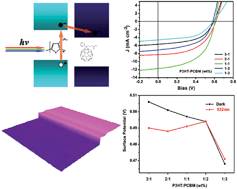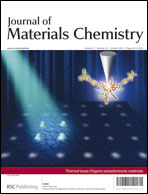Bridging mesoscopic blend structure and property to macroscopic device performance via in situ optoelectronic characterization†
Abstract
Bridging the mesoscopic blend structure and property to macroscopic device performance is a key issue for further improvement of photovoltaic conversion efficiency in

- This article is part of the themed collection: Organic optoelectronic materials

 Please wait while we load your content...
Please wait while we load your content...